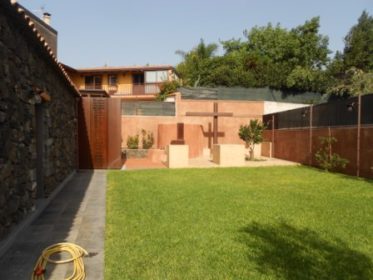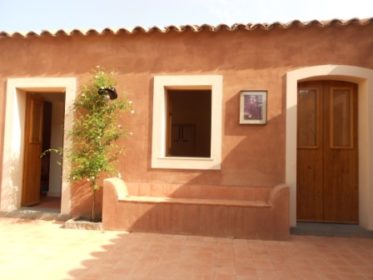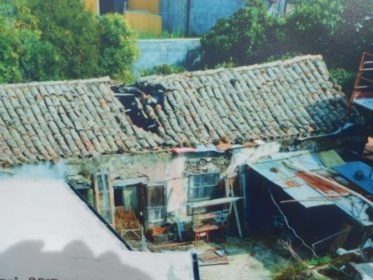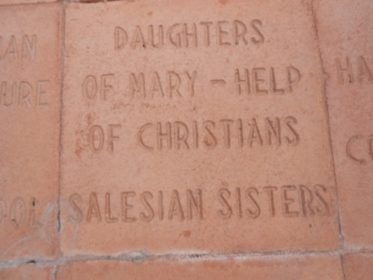von Salvatore Cifalinò
übersetzt von M.M. Geuer
 |
| Dr. Alberto Fischer |
Einer der Aspekte,
die die heutige Gesellschaft auszeichnen, ist die wachsende Zahl
übergewichtiger Kinder, die auf eine ungesunde Ernährung und einen sitzenden
Lebensstil zurückzuführen sind.
Aktuelle Daten des "Istituto superiore di Sanità"
(Oberstes Institut für Gesundheit) zeigen, dass 1 von 3 Kindern übergewichtig
ist.
Herr Dr. Fischer, wie werden die Ursachen für Adipositas bei Kindern identifiziert?
"Sowohl bei Erwachsenen als auch bei Kindern kann es bei Adipositas zu vielen verwandten Krankheiten kommen, die bereits in der Kindheit auftreten können, wie Herz-Kreislauf Erkrankungen, Bewegungsapparat, Stoffwechsel, psychologische Störungen (Misstrauen, Verhaltensstörungen, bipolare Störungen). Ein Kind, das bereits unter einem Jahr fettleibig ist, hat als Erwachsener ein höheres Risiko der Fettleibigkeit. Dies liegt daran, dass die Fettzellen zu diesem Zeitpunkt nicht nur hypertrophisch sind (mit der Möglichkeit, wieder normal zu werden), sondern auch die Zunahme der Anzahl (Hyperplasie) ohne die Möglichkeit, in Zukunft wieder zu schrumpfen".
Was sind die bekanntesten Ursachen für Fettleibigkeit?
Herr Dr. Fischer, wie werden die Ursachen für Adipositas bei Kindern identifiziert?
"Sowohl bei Erwachsenen als auch bei Kindern kann es bei Adipositas zu vielen verwandten Krankheiten kommen, die bereits in der Kindheit auftreten können, wie Herz-Kreislauf Erkrankungen, Bewegungsapparat, Stoffwechsel, psychologische Störungen (Misstrauen, Verhaltensstörungen, bipolare Störungen). Ein Kind, das bereits unter einem Jahr fettleibig ist, hat als Erwachsener ein höheres Risiko der Fettleibigkeit. Dies liegt daran, dass die Fettzellen zu diesem Zeitpunkt nicht nur hypertrophisch sind (mit der Möglichkeit, wieder normal zu werden), sondern auch die Zunahme der Anzahl (Hyperplasie) ohne die Möglichkeit, in Zukunft wieder zu schrumpfen".
Was sind die bekanntesten Ursachen für Fettleibigkeit?
 "Sie sind in erster Linie vererbt, in diesem Fall ist
das Risiko größer, wenn beide Elternteile oder eines von ihnen übergewichtig
ist. Darüber hinaus gibt es schlechte Lebensgewohnheiten, wie eine fettreiche
Ernährung, eine sitzende Lebensweise, mit wachsender Anzahl bei Kindern, die
Videospiele der körperlichen Aktivität vorziehen. Ich möchte hinzufügen, das
dies insbesondere auch auf die Medien und Werbung zurückzuführen ist. Selten
sind es bei Kindern genetische, hormonelle oder pharmakologische Ursachen".
"Sie sind in erster Linie vererbt, in diesem Fall ist
das Risiko größer, wenn beide Elternteile oder eines von ihnen übergewichtig
ist. Darüber hinaus gibt es schlechte Lebensgewohnheiten, wie eine fettreiche
Ernährung, eine sitzende Lebensweise, mit wachsender Anzahl bei Kindern, die
Videospiele der körperlichen Aktivität vorziehen. Ich möchte hinzufügen, das
dies insbesondere auch auf die Medien und Werbung zurückzuführen ist. Selten
sind es bei Kindern genetische, hormonelle oder pharmakologische Ursachen".
Was sind die Strategien zur Prävention von Fettleibigkeit bei Kindern?
"Es muss eine partizipative Allianz zwischen Kinderärzten, Familie, Schule und Institutionen durch die Umsetzung von Programmen zur kapillaren Gesundheitserziehung geben. Wir denken darüber nach, Snackautomaten in Schulen zu eliminieren und bei den Mahlzeiten immer Obst und Gemüse mit einzubeziehen. Außerdem sollte täglich mindestens eine Stunde ausreichende motorische Aktivität angeboten werden. Es wird außerdem empfohlen, dass Eltern die Zeit, die Kinder mit Fernsehen, Computern und Mobiltelefonen verbringen, drastisch begrenzt wird, um die Kinder zu Aktivitäten zu ermutigen, die mit Bewegung verbunden sind".
"Es muss eine partizipative Allianz zwischen Kinderärzten, Familie, Schule und Institutionen durch die Umsetzung von Programmen zur kapillaren Gesundheitserziehung geben. Wir denken darüber nach, Snackautomaten in Schulen zu eliminieren und bei den Mahlzeiten immer Obst und Gemüse mit einzubeziehen. Außerdem sollte täglich mindestens eine Stunde ausreichende motorische Aktivität angeboten werden. Es wird außerdem empfohlen, dass Eltern die Zeit, die Kinder mit Fernsehen, Computern und Mobiltelefonen verbringen, drastisch begrenzt wird, um die Kinder zu Aktivitäten zu ermutigen, die mit Bewegung verbunden sind".


























